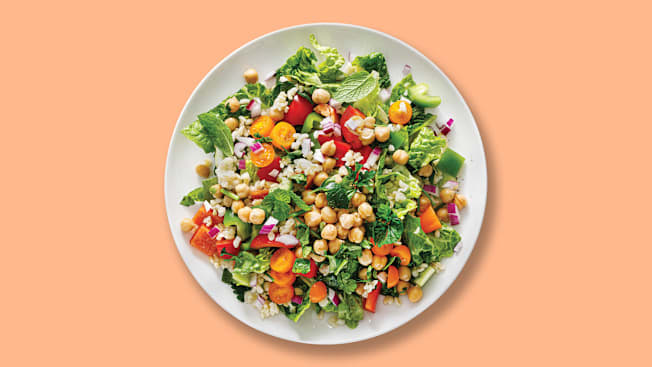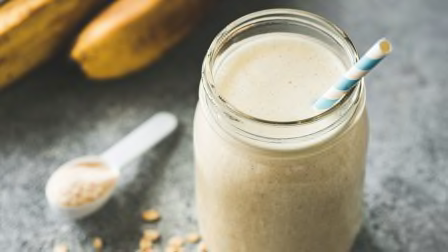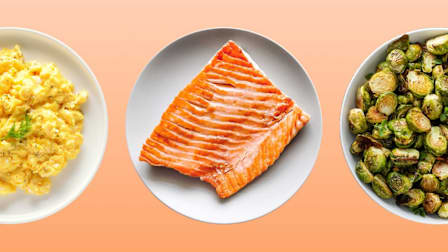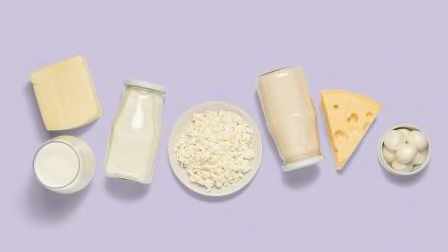The Case for Eating More Plant-Based Protein
The evidence for big health benefits has never been clearer. Here's how to get the right amount.

New Dietary Guidelines are expected to be issued this year, and there may be major changes. For the first time, the guidelines advisory committee recommends that people favor plant protein over animal sources—even those that are considered healthy, such as chicken and fish. “Beans, peas, and lentils would move to the top of the list of protein sources, encouraging people to emphasize those, while red meat moves to the bottom as the protein source you should eat least,” says Christopher Gardner, PhD, professor of medicine at Stanford Prevention Research Center in Palo Alto, Calif., and one of the committee members.
Experts have long touted the benefits of a plant-based diet, but this recommendation illustrates just how strong the evidence has become. “We know that people who consume more plant foods are healthier overall, and specifically have a lower risk of cancer, heart disease, diabetes, obesity, and even mental health and memory issues,” says Vanita Rahman, MD, clinic director at the Barnard Medical Center in Washington, D.C.
The Right Amount of Protein
The recommended daily protein intake for adults is 0.36 grams per pound of body weight, or 58 grams a day for a 160-pound person. As we age, we need more to help offset the decline in muscle mass that naturally occurs with age. Older adults should aim for 0.45 to 0.59 grams of protein per pound per day, or 72 to 94 grams for a 160-pound person.
You can get much or all of that from plant proteins. There are 20 grams of protein in a cup of tofu; about 18 grams in a cup of lentils, white beans, or edamame; 8 grams in a cup of quinoa or whole wheat pasta; and 6 grams in an ounce of almonds. Combining plant protein with healthy animal proteins—like nonfat Greek yogurt (20 grams in 1 cup), canned tuna (16 grams in 3 ounces), and chicken (24 grams in 3 ounces)—can help you meet your daily needs.
Balance Your Sources
“We know that replacing some animal with plant protein is beneficial, especially for heart health, but we didn’t know how much you need to replace to see those benefits,” says Andrea Glenn, PhD, RD, assistant professor of nutrition at New York University. So she and her colleagues set out to determine the best distribution of animal to plant protein in a heart-healthy diet.
After analyzing 30 years’ worth of diet and heart health data gleaned from over 200,000 people, here’s what they found: Those who got about 43 percent of their protein from plants had a 19 percent lower risk of heart disease than those who got only about 20 percent of their protein from plants. The biggest benefits came from replacing red and processed meat with plant proteins such as nuts and beans.
“Based on our research, most people should aim to get about a third of their protein from plants, and older adults and those at high risk of heart disease should aim for closer to 50 percent,” Glenn says.
Replacing some of the meat you eat with soy, beans, nuts, or even whole grains (which have good amounts of protein) will point you in the right direction. For example, swap the meat in a stir-fry for edamame and cashews or make a Bolognese-style spaghetti sauce with lentils instead of ground beef. Or try the plant protein meal ideas below. “You can still have your favorite flavors and cuisines,” says Rahman. “Think about what you enjoy eating, then look for plant-based substitutions.”
Still, if you want to sit down to a meat-focused meal—like a burger, steak, or chicken breast—it’s okay to do so. Just keep portions small (3 to 4 ounces) and eat mostly plant proteins the rest of the day.
Eat All Sorts of Plants
What to pair your plant proteins with? More plants! When you vary the fruits, vegetables, and grains you eat, you get a mix of different antioxidants and phytochemicals known to reduce inflammation and cancer risk. Eating a variety gives you the synergistic benefits of all the foods, says Rahman. “Together, they are more powerful than any one food on its own.”
One way to mix things up is to change the plant foods you use in dishes you eat regularly. Tossing a salad? Instead of grabbing one type of lettuce, add other greens, like spinach and arugula. Arranging a vegetable platter for a party? Go beyond carrots, peppers, and celery and add unexpected tastes like watermelon radishes or purple cauliflower. Making a grain side dish? Swap rice for amaranth or bulgur. And make it a point to have a few different types of fruit each week instead of sticking to bananas and apples.
Beware of Ultraprocessed Plant Foods
Eating less animal protein is a healthy move, but replacing it with plant-based junk food may be a step backward. Research shows that if you load up on items such as french fries, protein bars, refined grains, snack foods, and even plant burgers and other faux meats, you won’t reap the same benefits as you would from a diet rich in whole, unprocessed foods.
But you don’t have to forsake all packaged foods to have a healthy plant-based diet. Plenty of convenient foods—including precooked, frozen whole grains; canned beans; and tofu—are minimally processed and can make eating a healthy plant-based diet easier.
Six Protein-Packed Meal Ideas
Celine Beitchman, director of nutrition at the Institute of Culinary Education in New York City, offers these easy all-plant suggestions.
BREAKFAST
High-protein smoothie bowl: Blend frozen fruit with silken tofu and up to a teaspoon of honey or maple syrup. Top with granola.
Quinoa porridge: Using quinoa in place of oats can give you a slight protein boost. Cook the quinoa in coconut or almond milk, and top it with nuts, dried fruit, and a sprinkle of flax or chia seeds.
LUNCH
Pumped-up canned soup: Start with a low-sodium lentil or vegetable soup and add any leftover roasted veggies, cooked beans, grains, or frozen spinach or even salad greens.
Tempeh pastrami: Slice this fermented soy food and season it with onion powder, garlic powder, and smoked paprika (to mimic the pastrami taste), then sear it in a little oil. Use it to build a sandwich on rye bread with vegan Russian dressing.
DINNER
Vegan mac and cheese: You can make a convincing “cheese” sauce by blending raw cashews (soaked for a couple of hours ahead of time) with some cooked sweet potato, nutritional yeast, almond milk, and spices. Pour it over macaroni, mix in some broccoli florets or shredded zucchini, and bake.
Chili: If you love chili, try a version that replaces all—or most—of the meat with extra beans or crumbled tofu.
Editor’s Note: This article also appeared in the May 2025 issue of Consumer Reports On Health.




















